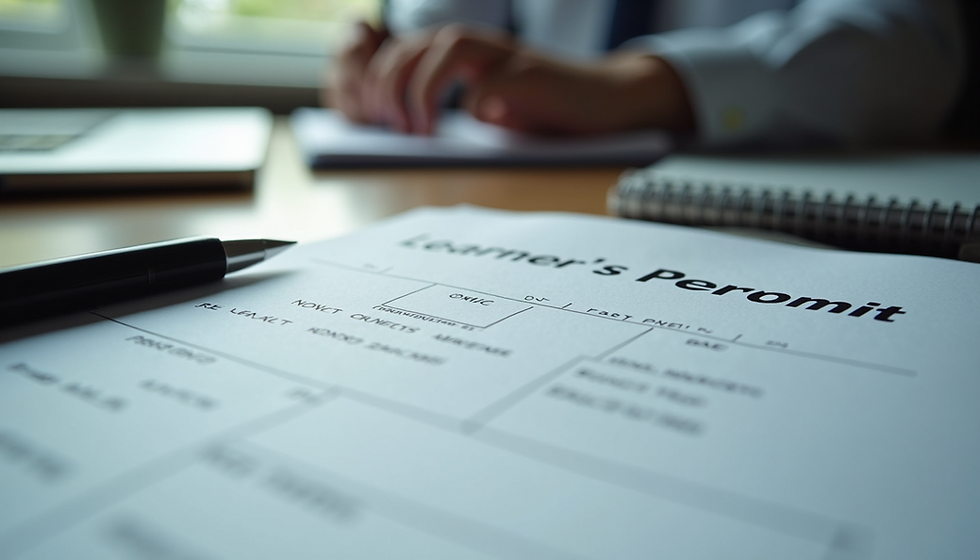Driving Instructors’ Tips for Navigating the Highway
- Safe Roads Driving School
- Sep 16, 2021
- 4 min read
Updated: Sep 12, 2022

Highway Driving Tips for a First-Time Driver
Highway driving can be very intimidating for most people, and it is the most sought-out learning experience for first-time drivers. That’s why we asked our driving instructors here at Safe Roads Driving School to compile a list of the most useful tips for highway driving. After reading this post, you’ll have a better understanding of how to safely navigate vast roads at high speeds.
Prerequisites to Highway
Before you can start driving on any highway, there are a number of important driving fundamentals that you need to understand and master. For example, the safe following distance you employ at 25 MPH is very different from the following distance needed at 45 MPH. Highway driving is covered thoroughly in the NJ First-Time Driver Manual.
Drivers should allow for a greater following distance as driving speed increases.
Below, we’ve outlined some steps you should take out of precaution before you attempt to drive on the highway:
Review pages 68-70 in the NJ Driver's Manual.
Only drive during non-peak hours (6 a.m. to 8 a.m. on weekdays or weekends—AVOID RUSH HOUR and NIGHTTIME DRIVING!!) in good weather conditions.
Remove all possible distractions. Set up your GPS, music, AC, and other car features before you start driving.
Watch dashcam videos of highway driving to become more accustomed to how it will look and feel.
Stay calm and be positive! The last thing you want to do is psych yourself out.
5. Always Have a Licensed Passenger with You During Your First Few Times
We strongly advise that you ALWAYS have one passenger who is LICENSED and EXPERIENCED with Highway Driving. So either ask a licensed friend/family member or book a highway driving lesson with a Driving School. Do not attempt to drive alone your first time on the highway, even if you’ve passed your road test. Supervision is key as you’ll always be bound to end up in an unfamiliar situation. That is why we highly advise supervision if you're a first time highway driver.
4. Start by Driving on Local Highways
Chances are good that at this point, you’ve only driven your car at speeds of about 25 to 35 MPH. On the highway, cars can legally reach speeds up to 65 MPH. Such a vast change in speed will significantly impact your ability to react, make sudden stops, and control the vehicle compared to when you’re driving at 25 MPH on local roads.
At higher speeds, drivers have less control of their vehicles. This is due to physics—click this link to find out more.
This is why it’s a smart idea to work your way up to highway driving speeds. Pick a local highway near you to start on. If you're near Hudson County, Essex County, Bergen, or Passaic County, then US Route 1/9 is a great highway to practice on. The legal speed limit on that highway is only 45 MPH, and it runs through urbanized areas in northern New Jersey.
3. Stay in the Rightmost Lanes
You likely already know that for the most part cars exit the highway on the right side and merge on the left side. This means that speeds in the left lane are significantly greater than speeds in the right lane. With this in mind, it’s more dangerous to be in the leftmost lanes if you’re a first-time highway driver. Note that merging on the highway is not as easy as merging on local roads due to high speed, so you’ll want to avoid merging as much as possible until you’re more comfortable driving at higher speeds. You can reduce the amount of times you have to merge by staying in the rightmost lanes.
2. Always Signal Your Intent
Whether you have to merge to reach a rest stop or exit or you need to pull over, you need to signal this to the surrounding drivers with the proper signal. THIS IS A LAW ALL DRIVERS MUST OBEY and a safety precaution we must take for cars not seen in our rear/side-view mirrors. When stopping in shoulder lanes due to an emergency, always signal your intent by using the proper light signal and keep your hazards on while you’re parked on the shoulder. This precaution signals other to cars to not steer too closely to the shoulder lane when passing you.
1. Always Be Attentive to Your Surroundings and Scan Ahead
When traveling at greater speeds, you’re going to cover more distance in a shorter time. This means you must ALWAYS scan the road farther ahead than you normally would on a local road. Highway roads allow you to scan further ahead because there are no buildings or obstacles to obstruct your view.
You’ll want to avoid keeping your eyes off the roads for any longer than a second. If you’re going to check your side-view or rear-view mirror, you'll want to make it quick! As you keep driving, the speed at which you process information will gradually become faster and you’ll grow to be a more confident driver. Avoid having to adjust your radio or AC; again, this should be done before you start driving on the highway. Keeping the stereo or GPS volume low is also a good idea, as having to process so much new information while listening to loud sounds can be very overwhelming.
We hope that you found these tips helpful. If you're located in Jersey City, NJ and are in need of highway driving lessons please don't hesitate to call us at (201) 402-2008



Comments